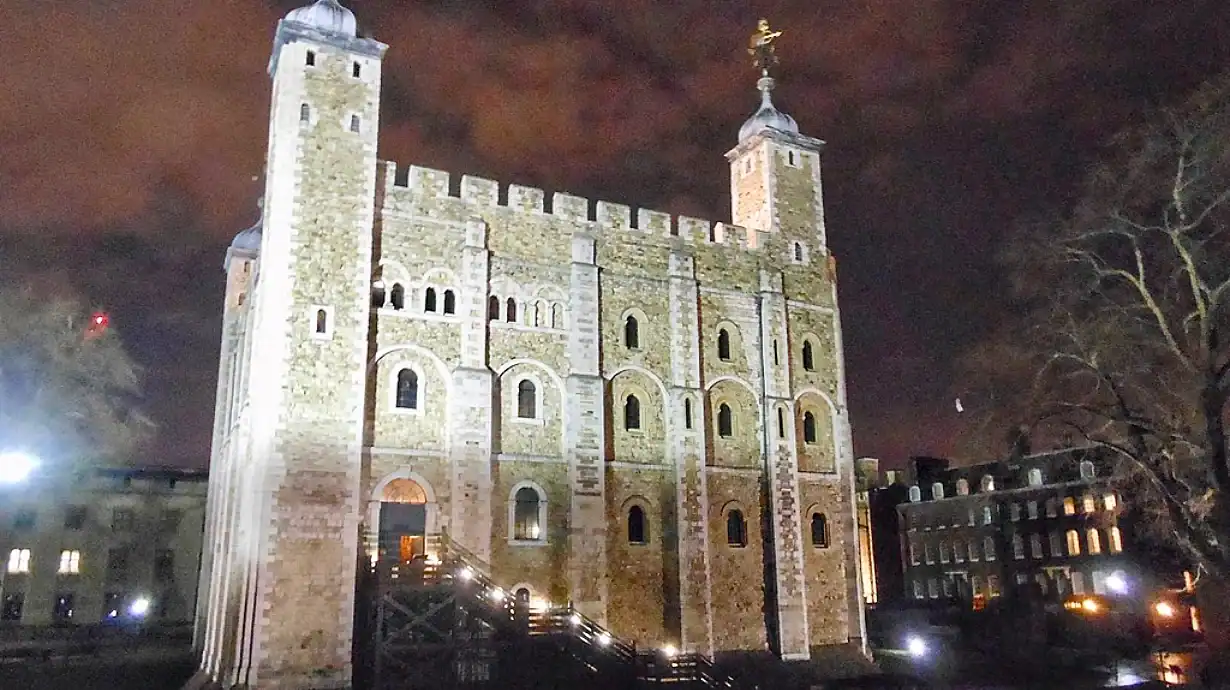
This thing is akin to the Arkenstone. It’s the heart of the country, the dried-up centre of the city, the fossilised pip of whatever tree stood here first. Nobody knows for sure where it came from. Some people believe that it’s Roman, some people think it’s medieval, whilst others will tell you it’s the stone from which Arthur pulled Excalibur.
All they really know for sure is that it’s incredibly old, and it’s this age that gave it a mythical status in the City. People used to come and touch it to seal a deal (a bit like swearing an oath on the Bible). Jack Cade was supposed to have hit it with his sword when he rebelled against Henry VI. By the time of Elizabeth I it had become so famous that Shakespeare even mentioned it in one of his plays.
Limestone block from Roman times
The experts’ best guess is that it was originally part of a gateway into the governor’s palace when London was still ruled by Rome. It was probably a big block of rock that stood about head height and it has been slowly eroding down over the centuries.
In 1578 a visiting dignitary measured it at three feet. Ninety years later the Great Fire of London swept along Candlewick Street (modern day Cannon Street) and cracked it in half. What remained was placed outside Christopher Wren’s long-gone St. Swithin’s church.
Location in Cannon Street
More ferocious fire and flames followed in 1940 when the Luftwaffe dropped a bomb on the church roof, levelling everything except the stone’s home in the western wall. It was then carried across to the other side of the street and imprisoned inside a grill outside WH Smith’s. When that building was itself torn down the stone found temporary respite at the Museum of London before a new tomb was built for it opposite Cannon Street station.
And that’s where you’ll find it today, a little bit smaller than it used to be, but still sitting in the same street it’s been for two thousand years, from where it’s witnessed the Blitz, the Great Fire of London, the Peasants’ Revolt, and even the fall of the Rome.
I also recommend… If you enjoy this then try London Museum (walk it in 12 mins or catch a tube from Cannon Street to Barbican). If you’re on the hunt for more Roman archaeology then try the amphitheatre in the Guildhall Art Gallery, followed by the Roman pavement in All Hallows-by-the-Tower. You might also like the fake Roman Bath in Strand Lane
How to get to London Stone
| Fare zone | Cash | Oyster & Contactless | Travelcard | ||||
|---|---|---|---|---|---|---|---|
| Single fare | Single fare | Daily cap | One day | ||||
| Peak | Off-peak | Peak | Off-peak | Anytime | Off-peak | ||
| Bus (all zones) | n/a | £1.75 | £5.25 | £6 | |||
| Train (zone 1) | £7 | £2.90 | £2.80 | £8.90 | £8.90 | £16.60(zone 1-4) | £16.60(zone 1-6) |
| Train (zone 1-2) | £7 | £3.50 | £2.90 | £8.90 | £8.90 | ||
| Train (zone 1-3) | £7 | £3.80 | £3.10 | £10.50 | £10.50 | ||
| Train (zone 1-4) | £7 | £4.60 | £3.40 | £12.80 | £12.80 | ||
| Train (zone 1-5) | £7 | £5.20 | £3.60 | £15.30 | £15.30 | £23.60(zone 1-6) | |
| Train (zone 1-6) | £7 | £5.80* | £3.80* | £16.30 | £16.30 | ||
| * Journeys between zone 1 and Heathrow are always charged at the peak rate. Prices are correct as of | |||||||
More things to do in The City





 Twitter
Twitter Facebook
Facebook Bluesky
Bluesky WhatsApp
WhatsApp Email
Email





